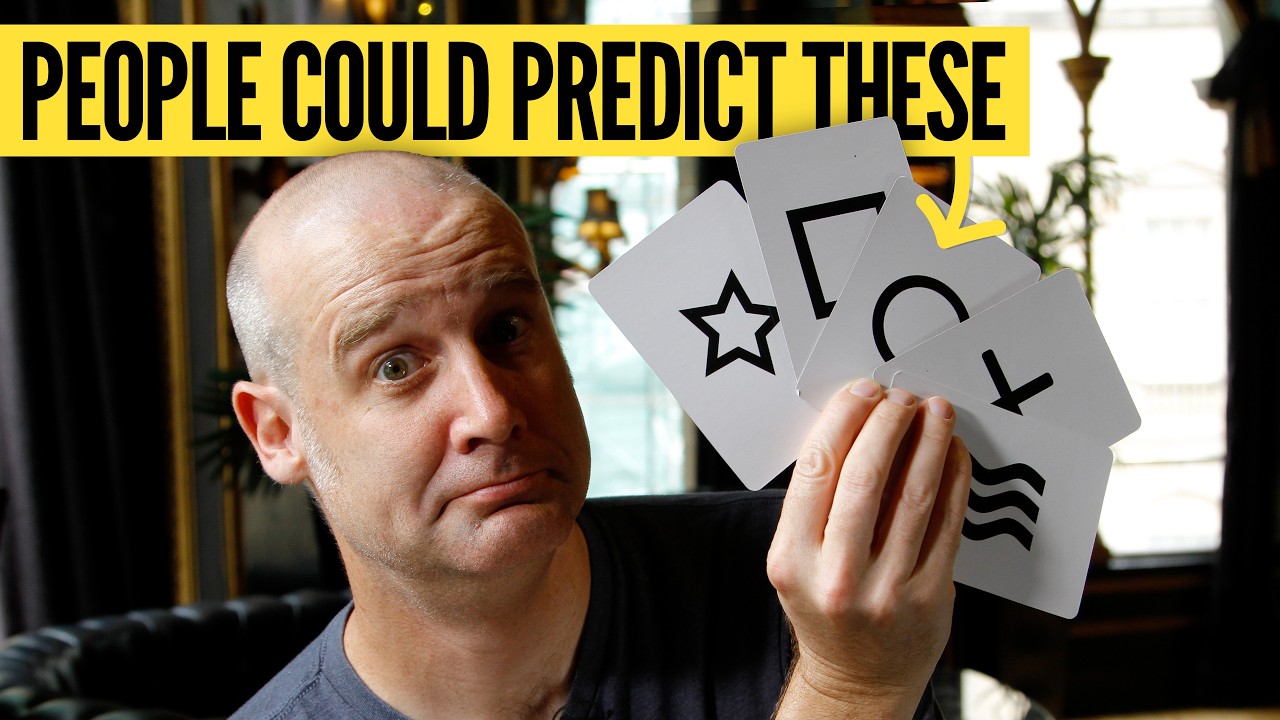The video investigates whether humans have psychic abilities through statistical analysis of ESP card guessing games, finding that while initial data from longer games suggested unusual results, these were actually caused by participant dropout bias rather than true psychic phenomena. It highlights the importance of careful data collection and interpretation, demonstrating how human behavior can skew experimental outcomes and emphasizing lessons in probability, statistics, and scientific rigor.
The video explores whether there is mathematical proof that humans possess psychic abilities, specifically through experiments involving ESP (extrasensory perception) cards, also known as Zener cards. These cards have five different symbols—circle, cross, wavy lines, square, and star—and were originally developed in the 1930s by Carl Zener and Joseph Banks Rhine to test psychic abilities. The presenter demonstrates a simple guessing game with these cards, explaining that each guess has a 20% chance of being correct if purely random. The video also introduces an online version of this game created by Ben Sparks, which has collected tens of thousands of trials from people guessing the cards.
The statistical foundation of the experiment is based on the binomial distribution, which predicts how many correct guesses one would expect by chance alone. For example, in a five-card guessing game, the most common outcome is getting one card right, with probabilities for zero to five correct guesses following a predictable pattern. The presenter shows that the data from thousands of trials generally matches this expected distribution for the five and ten card versions of the game, indicating no evidence of psychic ability. However, the 25-card version of the game reveals an unexpected deviation: fewer low scores and more mid-range scores than predicted, suggesting something unusual is happening.
Upon further investigation, the deviation in the 25-card game data is explained by a form of survivor bias caused by “rage quitting.” Many participants who performed poorly quit the game before finishing, and only completed games were recorded in the dataset. This means the worst scores were underrepresented, skewing the distribution toward better-than-expected results. When unfinished games were included, the average success rate aligned closely with the expected 20%, confirming that the initial anomaly was due to participants quitting rather than any psychic ability.
The video also discusses the importance of careful data collection and the dangers of bias in experiments, drawing parallels to medical research where unpublished negative results can distort the overall understanding of a treatment’s effectiveness. The presenter emphasizes that while the ESP card tests do not provide evidence for psychic powers, they serve as a valuable lesson in statistics, data interpretation, and the pitfalls of incomplete data. The experiment highlights how human behavior, such as quitting when things go poorly, can influence results and lead to misleading conclusions if not properly accounted for.
Finally, the video is sponsored by Jane Street, a global trading firm offering paid internships in New York, Hong Kong, and London. The presenter encourages viewers interested in math, problem-solving, and pattern recognition to consider applying. The video concludes with a lighthearted moment referencing the ESP card game and a reminder to subscribe, blending entertainment with educational content about probability, statistics, and the scientific method.
